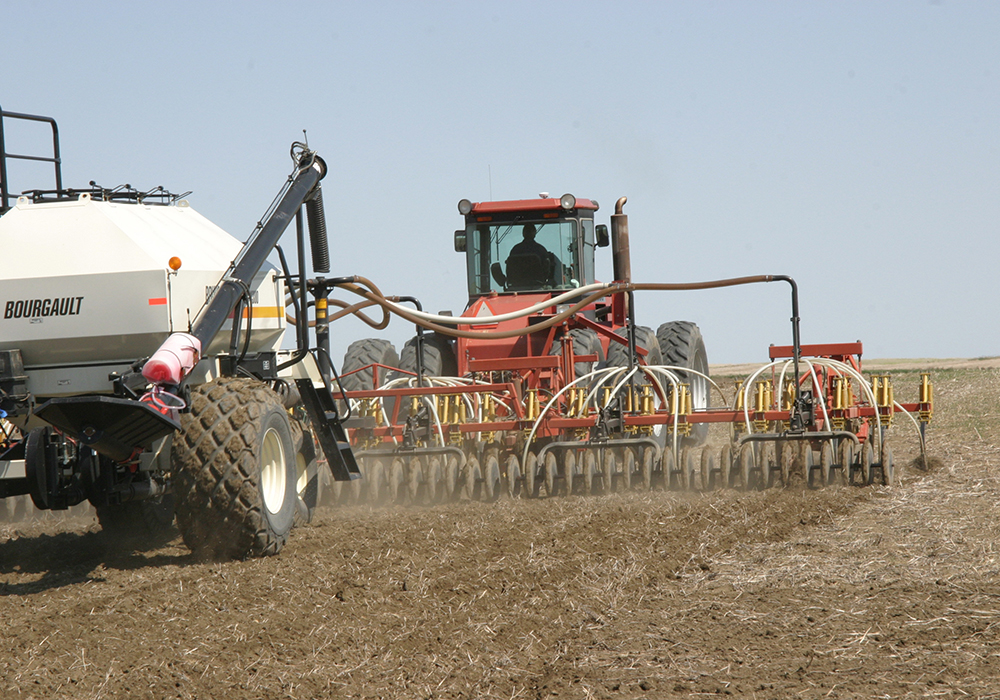The market has been trying to buy corn acres away from soybeans since the U.S. planting report, but the message does not extend to canola, which has kept pace with the rise in corn futures.
From March 30, the day before the U.S. Department of Agriculture prospective planting report up to April 15, new crop December corn rallied about 12 percent and November canola rallied 7.4 percent, but November soybeans gained only about 2.1 percent.
The planting report showed American farmers intended to cut corn area by four percent and increase soybean plantings by four percent.
Read Also

Grain farming’s hard times expected to continue
Rabobank says it will be two more years before North American grain farmers achieve break-even due to “monster” supplies and “sticky” crop input prices.
But with the war in Ukraine likely slashing that major exporter’s corn production and the outlook for Brazil’s second corn crop still uncertain, traders have been bidding up corn’s price to encourage more acres in the U.S.
They don’t necessarily want fewer soybean acres; indeed, world grain markets are short of just about every crop and want more production of everything.
And that is certainly true of canola. Canada is marketing a small crop because of last year’s drought and will be scraping the bottom of the barrel by the end of the crop year.
Ukraine is a major canola exporter to Europe and Russia’s invasion endangers the oilseed there.
As well, we don’t know the real impact yet, but the Weekly Weather and Crop Bulletin for April 3-9 from the USDA noted China’s rapeseed region suffered temperatures in the low 30s (10 C warmer than normal), stressing flowering plants in the Yangtze Valley.
So, the market is keen on getting lots of canola acres in Canada and has the November price surging ever higher to new all-time new crop highs.
The futures price is at such a level that Canadian analyst Errol Anderson noted in a tweet last week that if the contract was at $1,000 (it was actually higher), buying a November put option at $60 a tonne could guarantee a floor price of $940 or $21.30 a bushel, adjusted for delivered basis. Put options have the added benefit of retaining the upside if the market rallies further.
Also, there is no production or delivery obligation.
Getting back to the notion that the market wants more acres of everything, there is precedent.
The U.S. planting report estimated area of all major crops at 317.38 million acres, up less than 0.1 percent from last year. But within the last 10 years we have seen seeded area at 326.67 million acres in 2014. In other words, we could easily see U.S. total seeded area climb by about 9.3 million acres if the weather co-operates.
Spring so far has been a disappointment with temperatures on the Prairies, the northern U.S. and the Midwest well below normal. The heavy snow that fell in southern Manitoba, southeastern Saskatchewan and North Dakota April 13-14 will delay field work.
However, extended forecasts for the Midwest show a return to average to above-average temperatures by the end of April. The Canadian Prairies should see normal temperatures in May.
Most of the Midwest has good moisture and it will not surprise me to see farmers seeding extra fields if they have seed.
Now, let’s update the situation of crops already in the ground.
Those warnings about the Chinese winter wheat crop have moderated. Warmer than normal temperatures have helped the crop catch up after a slow start and the government has supplied extra money and resources to support production.
However, the extreme heat that hit rapeseed also put strain on the winter wheat.
Farther north in China’s corn and soybean region, seeding efforts are affected by shutdowns associated with COVID outbreaks.
In America’s hard red winter wheat region, the drought continues and crop condition ratings are the worst in many years.
A few weeks back, I noted that Brazil’s second corn crop was doing well and set for good production after a severe cutback last year.
Conditions remain good, but anxieties are rising fast because the transition to the dry season appears to have started early.
Normally, the transition happens in May but already central areas including Mato Grosso state, the largest producer, have been without significant moisture for a couple weeks.
Michael Cordonnier of Soybean and Corn Advisor noted the clear skies have kept temperatures above normal and soil is drying out. If the forecast for drier than normal conditions in May proves correct, current forecasts for production of around 112 million to 114 million tonnes of total corn production will start to be pulled down, adding more support to the corn market.
India, which is harvesting a record wheat crop and hoping for record exports, partly filling in for reduced Black Sea exports, got good news about the coming monsoon.
The country’s weather office on April 14 predicted the annual monsoon starting in June would be normal this year.















